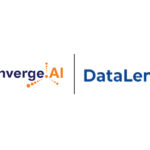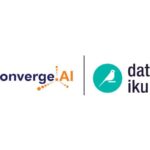
Don’t Fall for the Commodity Trap: Why Custom AI Matters More Than Ever
In the late 90s, adding “.com” to a company name made it look like part of the internet boom even if it wasn’t. Today, “AI” is the new “.com,” and the hype often hides the difference between real progress and false claims.
That’s why 86% of leaders believe off-the-shelf AI is as good as custom solutions, falling straight into the “AI commodity trap.” And 35% admit to “AI washing” chasing hype over delivering real outcomes. (Source: Business Insider)
AI is changing how businesses work fast. But while many companies are rushing to adopt it, a lot of them are getting it wrong. And for CEOs, the risks are real.
Here are 7 common mistakes leaders are making with AI and how to avoid them:
1. Choosing Ready-Made AI Over What You Really Need
Using generic AI tools might seem easy, but they rarely fit your exact business needs. Custom solutions take more effort but deliver far better results in the long run.
Our Senior Data Practitioner experienced few while consulting clients and shared real insights on this –Is Your Tech Stack a Frankenstein Monster? (Read This Before You Plan Your Next Tool) – Konverge AI
2. Showing Off AI Instead of Making It Work
Some companies use AI just to look innovative not to solve real problems. But without clear outcomes, those efforts fall flat.
One bank launched a GenAI chatbot but failed to update it leading to outdated answers and lost trust. In contrast, a finance client using our Agentic AI chatbot saw a 25% boost in satisfaction and 40% faster query resolution.
3. Letting Employees Use AI Without Rules
Many workers are already using AI tools, often without approval. This can lead to data leaks, compliance issues, and even legal trouble if not managed properly.
To solve this, there are many secured AI tools, such as DataLens an enterprise-grade GenAI accelerator now on the marketplace enabling secure, governed access to GenAI use cases like Document Copilot and Conversational SQL.
4. Building AI Without Clean Data
No matter how smart the AI is, bad data leads to bad results. Clean, well-managed data is the foundation of any successful AI system.
A logistics company’s AI gave false recommendations due to outdated data. After a data cleanup and pipeline overhaul, accuracy jumped by 30%.
5. Forgetting the People Side of AI
AI tools won’t succeed if your team doesn’t understand or trust them. Training, communication, and support are just as important as the technology itself.
One company rolled out an AI assistant for sales teams, but adoption was low due to lack of onboarding. Similarly, new tools for demos and outreach were underused. After running focused training sessions, usage jumped by 60%, and sales cycle time reduced by 18%.
6. Skipping Rules and Governance
Without clear rules for how AI should be used, companies can face serious risks from bias and mistakes to regulatory penalties.
A leading digital insurer lacked a reliable system to standardize damage estimation and prevent inflated claims. We built a robust computer vision model with AUC-ROC thresholds, validation tests, and governance checks enabling consistent, compliant, and fraud-resistant claim processing.
7. Expecting Fast Results
AI takes time to learn, improve, and deliver value. Rushing the process often leads to failure. Patience, planning, and iteration are key.
A leading European CPG company was struggling with slow sales insights and dashboard fatigue. We built a GenAI Data Copilot that reduced analysis time by 23%, boosted sales productivity by 15%, and enabled faster, smarter decisions across teams.
We’ve seen what happens when enterprises fall for AI washing, buy into the hype, and get stuck in the commodity trap and we have also seen what’s possible when they course-correct with the right strategy. If you want to avoid costly missteps, wasted investments, and underperforming pilots, let’s talk.
We know what works, where the pitfalls are, and how to build custom AI solutions that actually deliver. Talk to CEO












